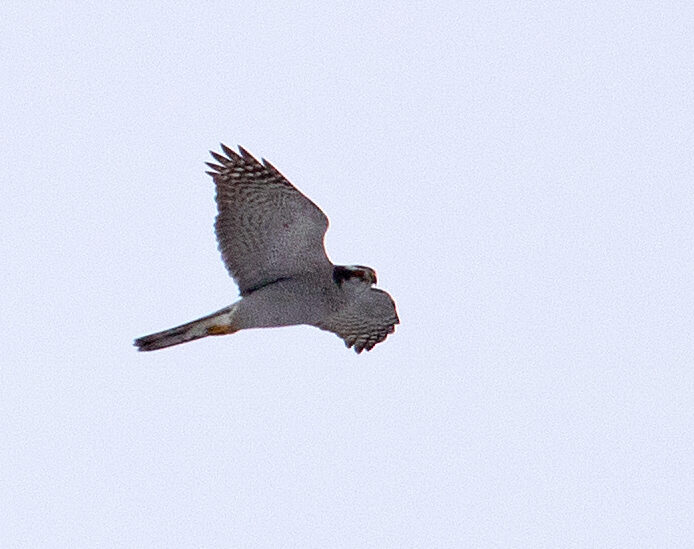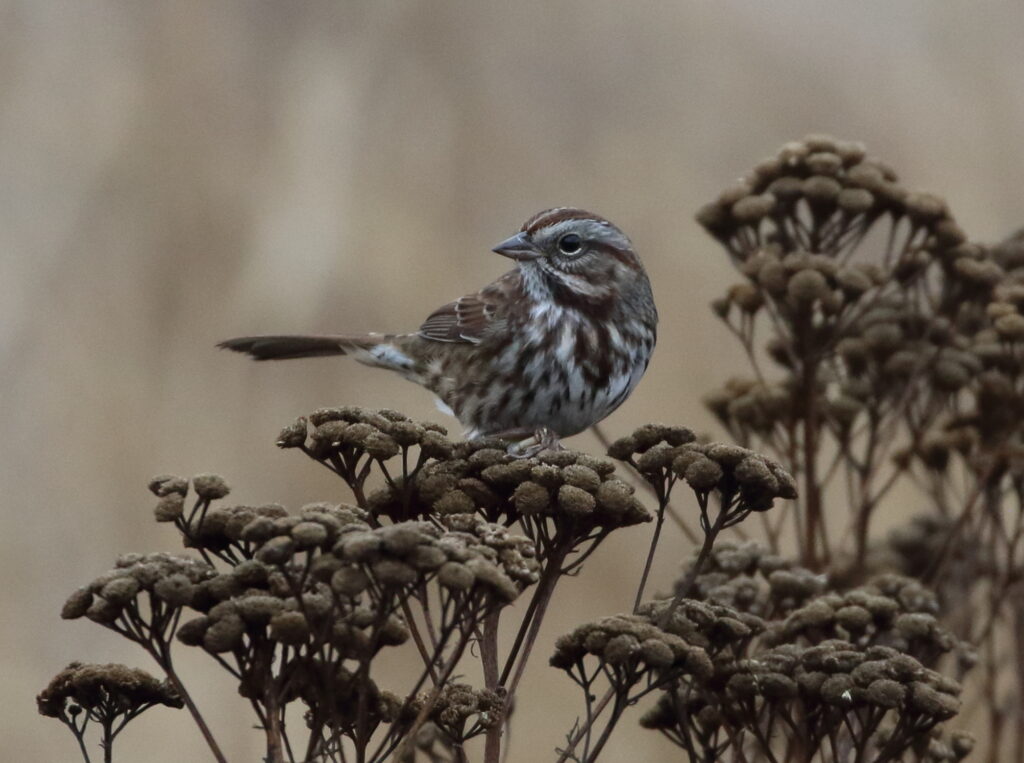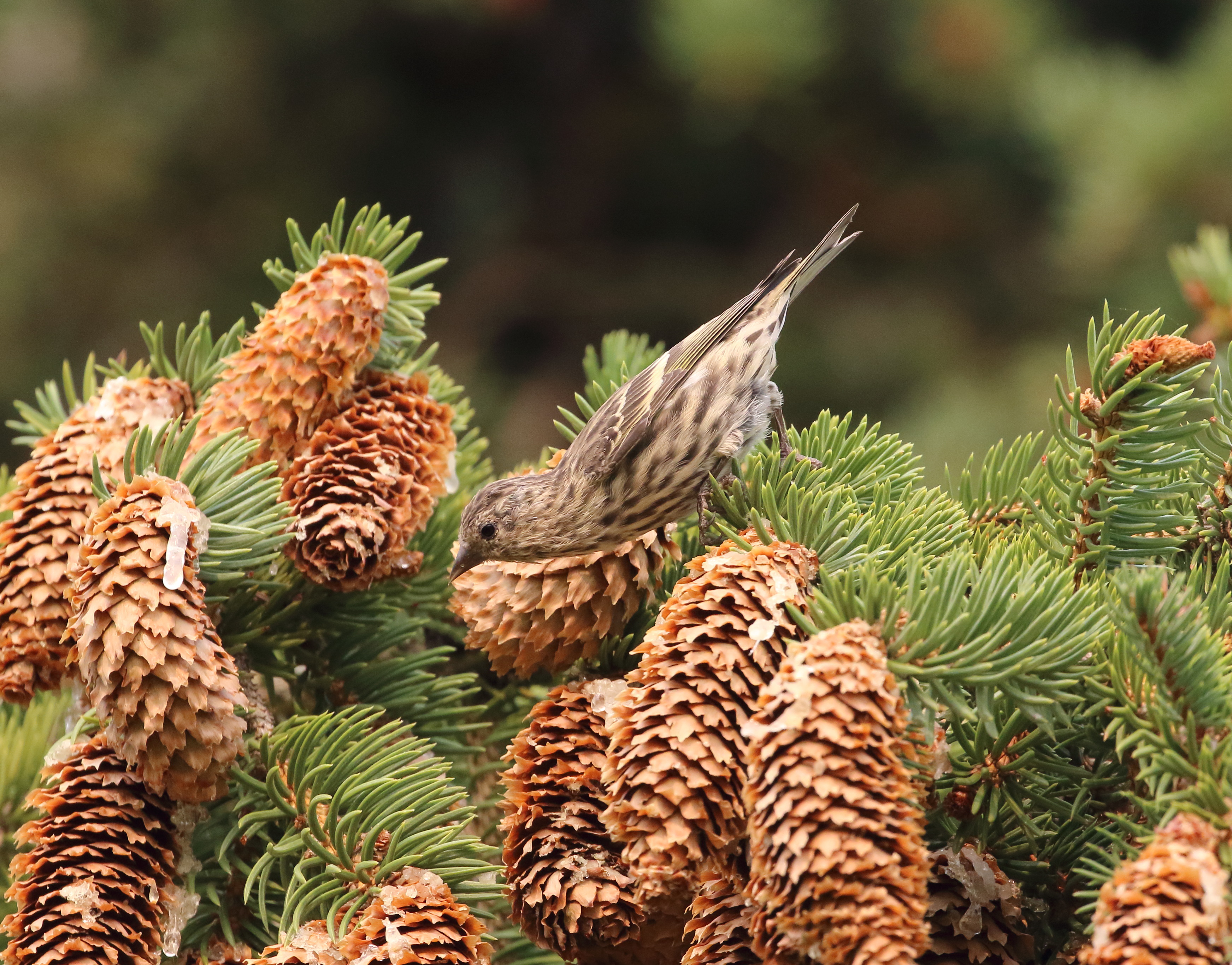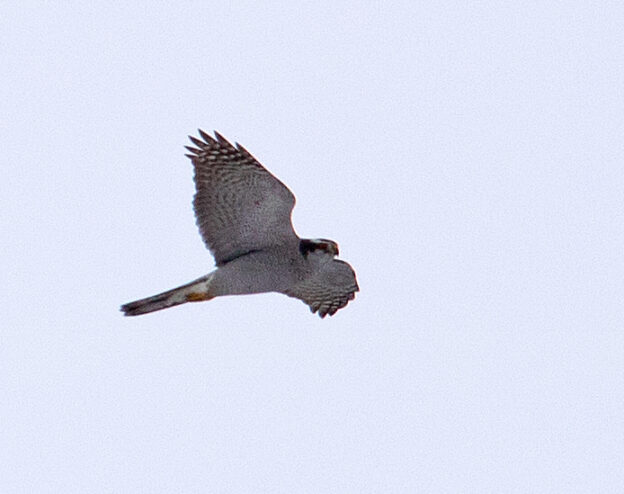In a recent Redpolling poll, voters overwhelmingly chose February as the worst month for birding (except for a few cheeky Floridians who lorded it over the rest of us). But is February really that bad? In Montana, after all, you can go find some wonderful winter residents such as Rough-legged Hawks, Northern Shrikes, and Snow Buntings. On the other hand, by February you’ve usually seen those already so where does that leave you?

For me personally, February is a time to get a lot of actual WORK done such as writing birding articles, banging out new children’s books, writing letters to the editor and my senators about bird conservation, and reading bird books. That doesn’t mean, however, that I’m not curious about which birds are around—while remaining optimistic that I’ll find some surprises if I go out. On a morning dog walk recently, for example, a Northern Goshawk flew right over me and Lola! This last Sunday morning, Lola and I again headed out wondering if we might see any other surprises.

We decided to do a loop I only rarely traverse anymore, through a private neighborhood that COULD be great bird habitat but has instead been landscaped with acres of lawn and over-pruned trees. Still, even before we got to that neighborhood, I noticed that our resident birds have shifted into courtship mode. On Valentine’s Day I heard the first two-note song of a chickadee for the year and also the first throaty warble of an advertising Northern Flicker. This morning, I heard both of those—plus an amazing number of Song Sparrows also advertising. I haven’t kept track of “first spring calls” before, but I wondered if they are on a trend toward “springing out” earlier and earlier every year?

In the private neighborhood itself, we heard some distant wild turkeys, a Red Crossbill, and an unknown high-pitched cacophony. My hearing is so sucky anymore I couldn’t tell who was making this chattering, but whipped out Merlin’s Sound ID, which ID’ed them as Pine Siskins. But where were they? I walked forward a bit, turned around and there they were—more than forty of them in a tree! Okay, so it wasn’t a Northern Pygmy-Owl, but I was still happy. Lola and I had headed out expecting maybe 6 or 8 species and ended up with sixteen! Just goes to show you that, even in the February Blahs, birds are around and ready to teach us new things.



Always good to read your blogs. Nice sighting of the Goshawk! I have an unusual abundance of Common Redpolls at the feeder this year, and have resigned myself to being grateful for that.
George, it seems to be a great year for redpolls everywhere. I never see as many as I’d like but have seen them several times and just love them. So cool you have them at your feeder! And thanks on the NOGO. It took me by surprise–but then again, that’s what they do!
Good report, Sneed. I am impressed that you can detect courtship calls. Your hearing can’t be too sucky.
I’m taking some time this month to try to improve my raptor ID skills. I knew even before reading your post that the hawk in your photo was not a RTH. But wasn’t sure what it was. Progess, if only in baby steps.
I’ve been enjoying playing with Merlin SoundID lately. But I learned to be cautious if it detects an unlikely species. I recently reported a Black-capped Chickadee based on sound, only to be admonished by my ebird reviewer that I can’t rely on Merlin in the absence of a photo for a rarity like BCCH, which is “exceedingly rare” in my County.
Bird on, Dude.
Hi Roger! Thanks for reading! Yes, Merlin Sound ID is tricky. From people I’ve talked to, it and BirdNET are about 80-85% accurate, which is about as good as they hope for. Still, a very useful tool. I use it in two ways: one to give me an idea what is making that confounded call so I can better look for it and second, to confirm something I’m already pretty sure about.
Oh, and by the way, I wear hearing aids every time I go out. Without those, I would be hearing very few spring calls!
The climate where I live is Pacific NW maritime…though since we’re up on a hill and far enough from the water to make a difference, it’s a bit chillier and sometimes snowier than the lovely phrase “maritime climate” suggests. Still, it typically stays above freezing for most of the winter, and so our resident Song Sparrow often bursts into song randomly in this season. But now he’s really striking up the band.
The male Anna’s Hummingbird has been courting since January, and I heard a Varied Thrush sing for the first time a week ago. So February’s not a dead loss here. I’m curious to hear who’ll be tuning up next.
Christina, thanks so much for sharing your lovely observations. You may have read our recent post about our Christmas trip to the Oregon coast. Braden and I were amazed at how many birds were out there–including, of course, those amazing Varied Thrushes, which are much harder to find in Montana! Thanks for reading!
These blogs are always good reads. Reminiscent of reading Thoreau’s prose.
Thoreau? Okay, Bill, now you’re just sucking up. Keep doing it! Love it!
First, I’d like to commend you in including your dog in decision-making regarding where to continue your walk. Far too often, people exhibit extreme anthropomorphism and rarely stop to think where their dogs want to explore. However, please be cognizant that your dog is likely a pleaser and would prefer, on rare occasions, to drag you through underbrush or up steep hillsides devoid of trails. And finally, thanks for being brave enough to judiciously use the word “cacophony”. Far too often, people hide from speaking words such as “scallawag” and “shenanigans” and the world is less colorful and descriptive for it.
Scott, all of your comments are greatly appreciation, especially with my overwhelming cacophony of indolence these days. And yes, Lola, would love to drag me through the brush, but as a privileged white male dog owner, I am exercising my right to not follow her on these aspirations and instead remind her who controls the dog treats.
Alternative comment: Ah, I want to see some Pine Siskins (lower lip quivering pouty face).
Inspiration for getting out to enjoy nature and find those early birds. great photos!
Thanks so much, Marie! Just got back from Salt Lake City, where I saw THREE species–ha!